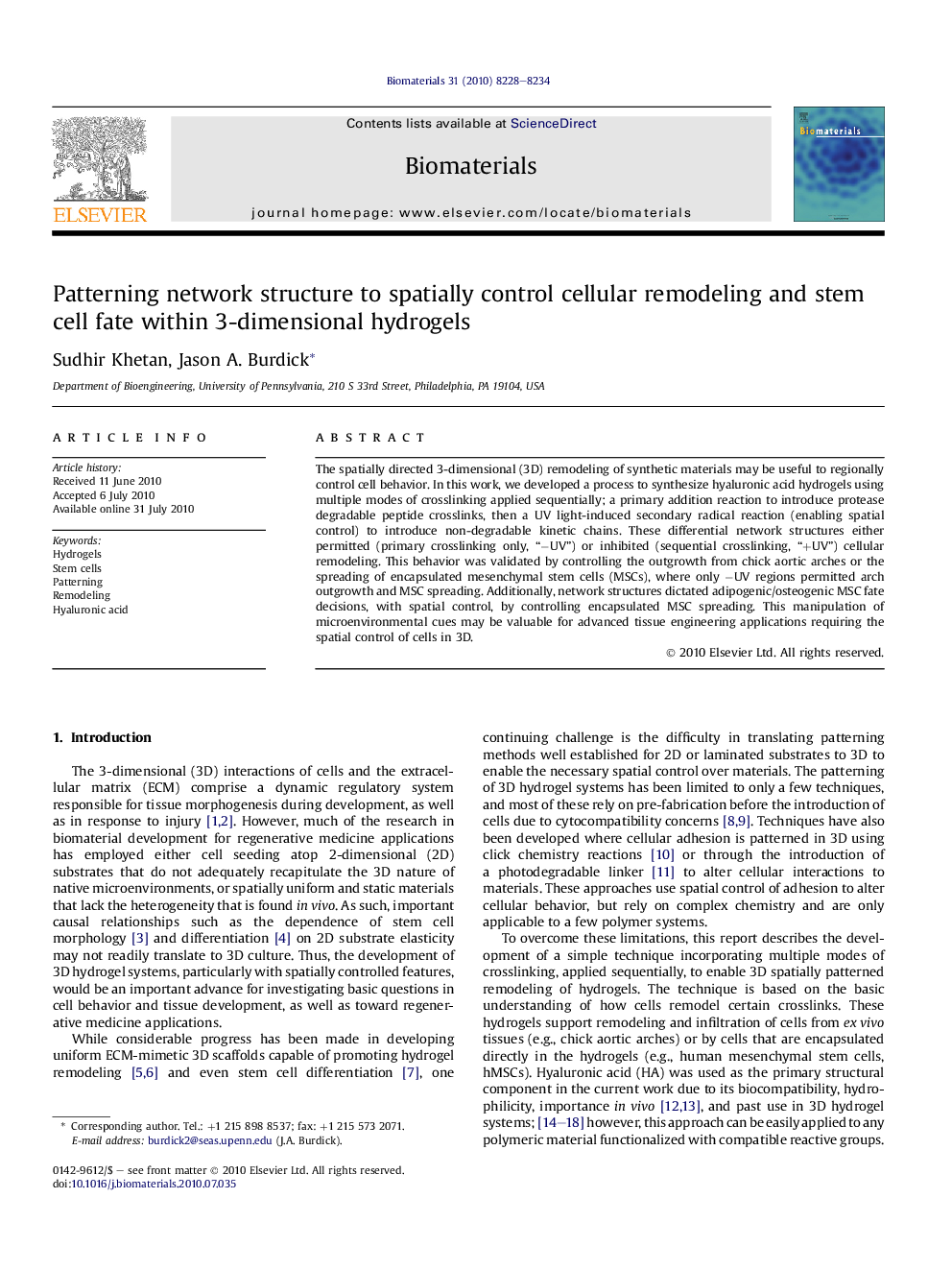| Article ID | Journal | Published Year | Pages | File Type |
|---|---|---|---|---|
| 7943 | Biomaterials | 2010 | 7 Pages |
The spatially directed 3-dimensional (3D) remodeling of synthetic materials may be useful to regionally control cell behavior. In this work, we developed a process to synthesize hyaluronic acid hydrogels using multiple modes of crosslinking applied sequentially; a primary addition reaction to introduce protease degradable peptide crosslinks, then a UV light-induced secondary radical reaction (enabling spatial control) to introduce non-degradable kinetic chains. These differential network structures either permitted (primary crosslinking only, “−UV”) or inhibited (sequential crosslinking, “+UV”) cellular remodeling. This behavior was validated by controlling the outgrowth from chick aortic arches or the spreading of encapsulated mesenchymal stem cells (MSCs), where only −UV regions permitted arch outgrowth and MSC spreading. Additionally, network structures dictated adipogenic/osteogenic MSC fate decisions, with spatial control, by controlling encapsulated MSC spreading. This manipulation of microenvironmental cues may be valuable for advanced tissue engineering applications requiring the spatial control of cells in 3D.
